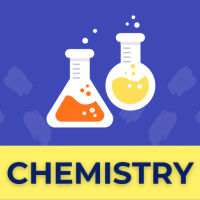Class 11 Exam > Class 11 Questions > What is the dominant intermolecular force or ...
Start Learning for Free
What is the dominant intermolecular force or bond that must be overcome in converting liquid CH3OH to a gas? [2009]
- a)Dipole-dipole interaction
- b)Covalent bonds
- c)London dispersion force
- d)Hydrogen bonding
Correct answer is option 'D'. Can you explain this answer?
| FREE This question is part of | Download PDF Attempt this Test |
Verified Answer
What is the dominant intermolecular force or bond that must be overcom...
Due to intermolecular hydrogen bonding in methanol, it exist as assosiated molecule.
Most Upvoted Answer
What is the dominant intermolecular force or bond that must be overcom...
The dominant intermolecular force that must be overcome in converting liquid CH3OH to a gas is hydrogen bonding.
Hydrogen bonding is a special type of dipole-dipole interaction that occurs when a hydrogen atom is bonded to a highly electronegative atom (such as oxygen, nitrogen, or fluorine) and is attracted to another electronegative atom in a neighboring molecule. In the case of CH3OH, the hydrogen atom is bonded to the oxygen atom, which is highly electronegative.
To understand why hydrogen bonding is the dominant force in converting liquid CH3OH to a gas, let's first discuss the other options:
a) Dipole-dipole interaction: Dipole-dipole interactions occur between polar molecules, where the positive end of one molecule is attracted to the negative end of another molecule. While CH3OH is a polar molecule due to the difference in electronegativity between carbon and oxygen, the strength of dipole-dipole interactions is weaker than hydrogen bonding.
b) Covalent bonds: Covalent bonds are the strong forces that hold atoms together within a molecule. In the process of converting liquid CH3OH to a gas, the covalent bonds within the molecule are not broken, as only intermolecular forces are involved.
c) London dispersion forces: London dispersion forces are the weakest intermolecular forces and occur between all molecules, polar or nonpolar. These forces arise from temporary fluctuations in electron distribution, resulting in the creation of temporary dipoles. However, London dispersion forces are generally weaker than dipole-dipole interactions and hydrogen bonding.
d) Hydrogen bonding: As mentioned earlier, CH3OH molecules can form hydrogen bonds due to the presence of a hydrogen atom bonded to an electronegative oxygen atom. The hydrogen bond is formed between the hydrogen atom of one CH3OH molecule and the oxygen atom of another CH3OH molecule. Hydrogen bonding is stronger than dipole-dipole interactions and London dispersion forces, making it the dominant force in converting liquid CH3OH to a gas.
In conclusion, the dominant intermolecular force that must be overcome in converting liquid CH3OH to a gas is hydrogen bonding. This is because hydrogen bonding is stronger than other intermolecular forces such as dipole-dipole interactions and London dispersion forces.
Hydrogen bonding is a special type of dipole-dipole interaction that occurs when a hydrogen atom is bonded to a highly electronegative atom (such as oxygen, nitrogen, or fluorine) and is attracted to another electronegative atom in a neighboring molecule. In the case of CH3OH, the hydrogen atom is bonded to the oxygen atom, which is highly electronegative.
To understand why hydrogen bonding is the dominant force in converting liquid CH3OH to a gas, let's first discuss the other options:
a) Dipole-dipole interaction: Dipole-dipole interactions occur between polar molecules, where the positive end of one molecule is attracted to the negative end of another molecule. While CH3OH is a polar molecule due to the difference in electronegativity between carbon and oxygen, the strength of dipole-dipole interactions is weaker than hydrogen bonding.
b) Covalent bonds: Covalent bonds are the strong forces that hold atoms together within a molecule. In the process of converting liquid CH3OH to a gas, the covalent bonds within the molecule are not broken, as only intermolecular forces are involved.
c) London dispersion forces: London dispersion forces are the weakest intermolecular forces and occur between all molecules, polar or nonpolar. These forces arise from temporary fluctuations in electron distribution, resulting in the creation of temporary dipoles. However, London dispersion forces are generally weaker than dipole-dipole interactions and hydrogen bonding.
d) Hydrogen bonding: As mentioned earlier, CH3OH molecules can form hydrogen bonds due to the presence of a hydrogen atom bonded to an electronegative oxygen atom. The hydrogen bond is formed between the hydrogen atom of one CH3OH molecule and the oxygen atom of another CH3OH molecule. Hydrogen bonding is stronger than dipole-dipole interactions and London dispersion forces, making it the dominant force in converting liquid CH3OH to a gas.
In conclusion, the dominant intermolecular force that must be overcome in converting liquid CH3OH to a gas is hydrogen bonding. This is because hydrogen bonding is stronger than other intermolecular forces such as dipole-dipole interactions and London dispersion forces.
Attention Class 11 Students!
To make sure you are not studying endlessly, EduRev has designed Class 11 study material, with Structured Courses, Videos, & Test Series. Plus get personalized analysis, doubt solving and improvement plans to achieve a great score in Class 11.

|
Explore Courses for Class 11 exam
|

|
What is the dominant intermolecular force or bond that must be overcome in converting liquid CH3OH to a gas? [2009]a)Dipole-dipole interactionb)Covalent bondsc)London dispersion forced)Hydrogen bondingCorrect answer is option 'D'. Can you explain this answer?
Question Description
What is the dominant intermolecular force or bond that must be overcome in converting liquid CH3OH to a gas? [2009]a)Dipole-dipole interactionb)Covalent bondsc)London dispersion forced)Hydrogen bondingCorrect answer is option 'D'. Can you explain this answer? for Class 11 2024 is part of Class 11 preparation. The Question and answers have been prepared according to the Class 11 exam syllabus. Information about What is the dominant intermolecular force or bond that must be overcome in converting liquid CH3OH to a gas? [2009]a)Dipole-dipole interactionb)Covalent bondsc)London dispersion forced)Hydrogen bondingCorrect answer is option 'D'. Can you explain this answer? covers all topics & solutions for Class 11 2024 Exam. Find important definitions, questions, meanings, examples, exercises and tests below for What is the dominant intermolecular force or bond that must be overcome in converting liquid CH3OH to a gas? [2009]a)Dipole-dipole interactionb)Covalent bondsc)London dispersion forced)Hydrogen bondingCorrect answer is option 'D'. Can you explain this answer?.
What is the dominant intermolecular force or bond that must be overcome in converting liquid CH3OH to a gas? [2009]a)Dipole-dipole interactionb)Covalent bondsc)London dispersion forced)Hydrogen bondingCorrect answer is option 'D'. Can you explain this answer? for Class 11 2024 is part of Class 11 preparation. The Question and answers have been prepared according to the Class 11 exam syllabus. Information about What is the dominant intermolecular force or bond that must be overcome in converting liquid CH3OH to a gas? [2009]a)Dipole-dipole interactionb)Covalent bondsc)London dispersion forced)Hydrogen bondingCorrect answer is option 'D'. Can you explain this answer? covers all topics & solutions for Class 11 2024 Exam. Find important definitions, questions, meanings, examples, exercises and tests below for What is the dominant intermolecular force or bond that must be overcome in converting liquid CH3OH to a gas? [2009]a)Dipole-dipole interactionb)Covalent bondsc)London dispersion forced)Hydrogen bondingCorrect answer is option 'D'. Can you explain this answer?.
Solutions for What is the dominant intermolecular force or bond that must be overcome in converting liquid CH3OH to a gas? [2009]a)Dipole-dipole interactionb)Covalent bondsc)London dispersion forced)Hydrogen bondingCorrect answer is option 'D'. Can you explain this answer? in English & in Hindi are available as part of our courses for Class 11.
Download more important topics, notes, lectures and mock test series for Class 11 Exam by signing up for free.
Here you can find the meaning of What is the dominant intermolecular force or bond that must be overcome in converting liquid CH3OH to a gas? [2009]a)Dipole-dipole interactionb)Covalent bondsc)London dispersion forced)Hydrogen bondingCorrect answer is option 'D'. Can you explain this answer? defined & explained in the simplest way possible. Besides giving the explanation of
What is the dominant intermolecular force or bond that must be overcome in converting liquid CH3OH to a gas? [2009]a)Dipole-dipole interactionb)Covalent bondsc)London dispersion forced)Hydrogen bondingCorrect answer is option 'D'. Can you explain this answer?, a detailed solution for What is the dominant intermolecular force or bond that must be overcome in converting liquid CH3OH to a gas? [2009]a)Dipole-dipole interactionb)Covalent bondsc)London dispersion forced)Hydrogen bondingCorrect answer is option 'D'. Can you explain this answer? has been provided alongside types of What is the dominant intermolecular force or bond that must be overcome in converting liquid CH3OH to a gas? [2009]a)Dipole-dipole interactionb)Covalent bondsc)London dispersion forced)Hydrogen bondingCorrect answer is option 'D'. Can you explain this answer? theory, EduRev gives you an
ample number of questions to practice What is the dominant intermolecular force or bond that must be overcome in converting liquid CH3OH to a gas? [2009]a)Dipole-dipole interactionb)Covalent bondsc)London dispersion forced)Hydrogen bondingCorrect answer is option 'D'. Can you explain this answer? tests, examples and also practice Class 11 tests.

|
Explore Courses for Class 11 exam
|

|
Suggested Free Tests
Signup for Free!
Signup to see your scores go up within 7 days! Learn & Practice with 1000+ FREE Notes, Videos & Tests.






















